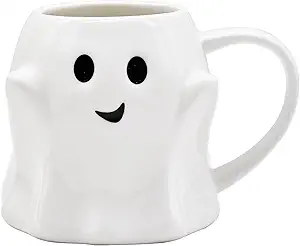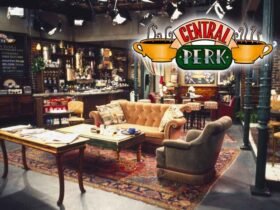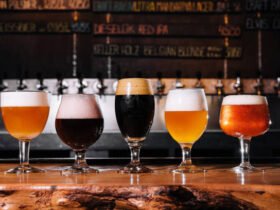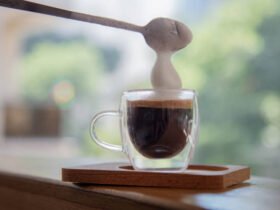Are you ready to transform your morning routine with a perfect pot of coffee? Whether you’re a coffee aficionado or just someone who enjoys a good cup, mastering the art of brewing coffee can elevate your daily experience. This blog post will guide you through every step of the process, ensuring that each pot you make is rich, flavorful, and satisfying. Read on to discover how to brew a pot of coffee that will make your mornings brighter and your taste buds happier.
The Importance of Fresh Coffee Beans
Why Freshness Matters
Fresh coffee beans are the foundation of a great cup of coffee. When coffee beans are fresh, they retain their natural oils and flavors, which contribute to a richer and more aromatic brew. Stale beans, on the other hand, can result in a flat, uninspiring cup.
Choosing the Right Beans
When selecting coffee beans, look for options that have been roasted recently. Many specialty coffee shops provide the roast date on their packaging, which is a good indicator of freshness. Opt for whole beans rather than pre-ground coffee, as grinding just before brewing preserves the beans’ flavors.
Storing Your Coffee Beans
To keep your coffee beans fresh, store them in an airtight container in a cool, dark place. Avoid storing them in the refrigerator or freezer, as moisture can affect the beans’ quality. Proper storage can extend the lifespan of your coffee beans, ensuring that each pot you brew is as delicious as the last.
Understanding Grind Size
The Role of Grind Size in Flavor
The grind size of your coffee beans plays a crucial role in the extraction process, affecting the flavor and strength of your brew. Different brewing methods require different grind sizes to achieve optimal results.
Types of Grind Sizes
For a standard drip coffee maker, a medium grind is typically recommended. If you’re using a French press, a coarse grind works best, while an espresso machine requires a fine grind. Experimenting with grind size can help you find the perfect balance for your taste preferences.
Grinding Your Beans at Home
Investing in a good quality burr grinder allows you to grind your beans to the desired consistency. Burr grinders produce a uniform grind, which ensures even extraction and better flavor. Grinding your beans just before brewing guarantees maximum freshness and aroma.
Water Quality and Temperature
Why Water Quality Matters
The quality of water you use can significantly impact the taste of your coffee. Water that contains impurities or has a strong taste can affect the final flavor of your brew.
Using Filtered Water
Using filtered water is an easy way to improve the quality of your coffee. Filtered water removes impurities and minerals that can interfere with the taste, resulting in a cleaner and more enjoyable cup.
Ideal Brewing Temperature
The ideal water temperature for brewing coffee is between 195°F and 205°F. Water that is too hot can over-extract the coffee, making it bitter, while water that is too cool can under-extract, resulting in a weak brew. Using a kitchen thermometer can help you achieve the perfect brewing temperature.
Measuring Coffee and Water
The Golden Ratio
The golden ratio for brewing coffee is typically one to two tablespoons of coffee per six ounces of water. This ratio can be adjusted based on your taste preferences and the strength of the coffee you desire.
Using a Scale for Precision
Using a kitchen scale to measure your coffee and water can provide greater precision and consistency. By weighing your ingredients, you can achieve the perfect balance and avoid over or under-extraction.
Adjusting for Personal Taste
Feel free to experiment with the coffee-to-water ratio to find what works best for you. Some people prefer a stronger cup, while others enjoy a milder brew. Adjusting the measurements allows you to customize your coffee to your liking.
Brewing Methods
Drip Coffee Maker
The drip coffee maker is one of the most popular methods for brewing coffee at home. It’s convenient and easy to use, making it a favorite among coffee lovers. Simply add your coffee grounds to the filter, fill the reservoir with water, and start the machine.
French Press
The French press, also known as a press pot, offers a more hands-on approach to brewing coffee. Add coarsely ground coffee to the press, pour in hot water, stir, and allow it to steep for about four minutes. Press down the plunger slowly and evenly to separate the grounds from the liquid.
Pour-Over
The pour-over method provides greater control over the brewing process. Place a paper filter in a dripper, add your coffee grounds, and pour hot water over the grounds in a slow, circular motion. This method allows for a more even extraction and a clean, flavorful cup.
Halloween Ghost Coffee Mug
Common Brewing Mistakes to Avoid
Using Stale Beans
Using old, stale coffee beans can result in a dull and lackluster brew. Always opt for fresh beans and store them properly to preserve their flavor.
Incorrect Grind Size
Using the wrong grind size for your brewing method can lead to under or over-extraction. Make sure to match your grind size to your brewing method for the best results.
Poor Water Quality
Water quality plays a significant role in the taste of your coffee. Use filtered water to avoid unwanted flavors and impurities.
Enhancing Your Coffee Experience
Experimenting with Flavors
Don’t be afraid to experiment with different coffee beans and flavors. Try beans from various regions and roasters to discover new and exciting taste profiles.
Adding Spices and Sweeteners
A pinch of cinnamon or a splash of vanilla can add a delightful twist to your morning cup. Explore different spices and sweeteners to enhance your coffee experience.
Investing in Quality Equipment
Quality brewing equipment can make a significant difference in the taste of your coffee. Consider investing in a good coffee maker, grinder, and other accessories to elevate your coffee game.
Cleaning and Maintaining Your Equipment
Regular Cleaning
Regularly cleaning your coffee maker and other equipment is essential for maintaining the quality of your brew. Residue and oils can build up over time, affecting the taste of your coffee.
Descaling Your Coffee Maker
Descaling your coffee maker removes mineral buildup that can interfere with the brewing process. Follow the manufacturer’s instructions for descaling to keep your machine in top condition.
Replacing Filters
If your coffee maker uses paper filters, be sure to replace them regularly. Used filters can affect the flavor of your coffee and may harbor bacteria.
Frequently Asked Questions
How Often Should I Clean My Coffee Maker?
It’s recommended to clean your coffee maker at least once a month to prevent buildup and ensure optimal performance.
Can I Use Tap Water for Brewing Coffee?
While you can use tap water, filtered water is preferable as it removes impurities that can affect the taste of your coffee.
What Is the Best Way to Store Coffee Beans?
Store coffee beans in an airtight container in a cool, dark place to maintain freshness.
Conclusion
Brewing the perfect pot of coffee doesn’t have to be complicated. By paying attention to the freshness of your beans, grind size, water quality, and brewing method, you can create a delicious and satisfying cup every time. Experiment with different techniques and flavors to find what works best for you.
Ready to take your coffee game to the next level? Start by implementing these tips and enjoy the rich, aromatic reward of a perfectly brewed pot of coffee. Happy brewing!






